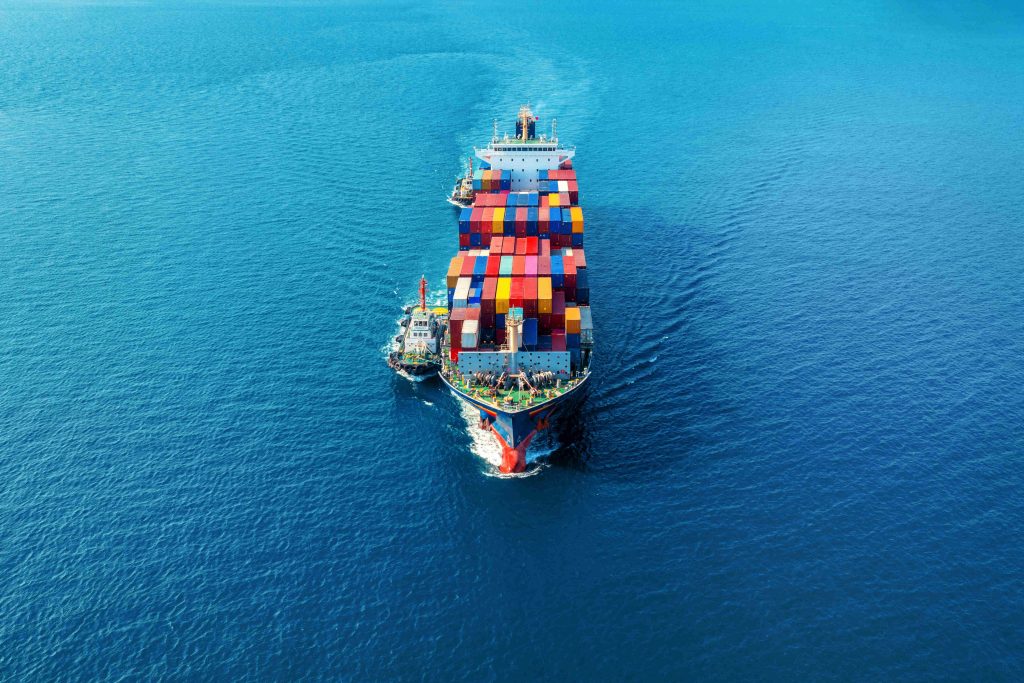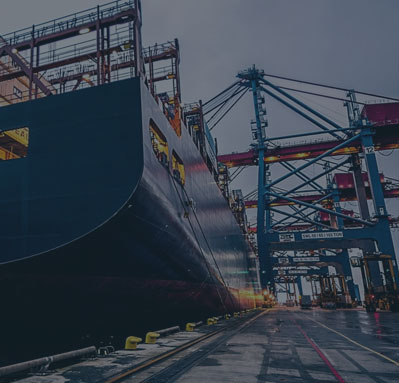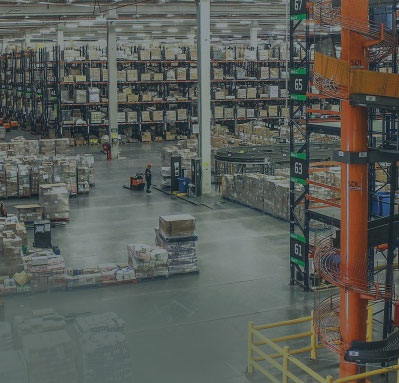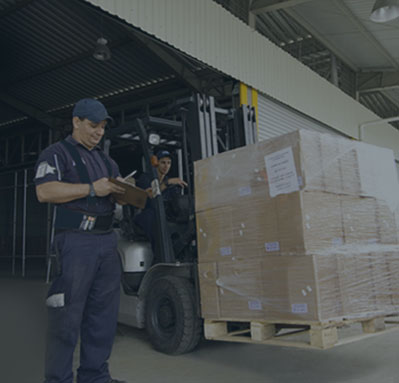In today’s interconnected global economy, efficient transportation of goods across long distances is crucial for businesses and individuals. Shipping methods play a vital role in this process, and each method has its own set of advantages and disadvantages. By understanding the pros and cons of different shipping methods – air, sea, and land – we can make informed decisions about which method best suits our shipping needs. In this blog, we will delve into each method in detail, exploring their benefits and drawbacks.

Air Shipping
Air shipping, also known as air freight, offers several advantages and disadvantages. Let’s delve further into the pros and cons of this shipping method:
Pros of Air Shipping
Speed
Air shipping is renowned for its unparalleled speed. It is the fastest mode of transportation available for goods, making it ideal for time-sensitive shipments. Within a matter of hours, goods can be transported from one continent to another, ensuring prompt delivery and reducing transit times significantly.
Accessibility
Airports are spread worldwide, providing extensive global coverage. This accessibility is particularly crucial for businesses operating in remote or distant markets. Regardless of the destination, air shipping offers the convenience of reaching even the most isolated locations, facilitating international trade and business expansion.
Reduced packaging
Air shipments typically involve fewer handling points compared to other shipping methods, such as sea or land transportation. This streamlined process reduces the risk of damage to goods during transit. Consequently, businesses can benefit from lesser packaging requirements, minimizing the need for excessive protective materials and reducing overall costs.
Enhanced security
Airports adhere to strict security measures to ensure the safety of passengers, cargo, and aircraft. These security protocols minimize the chances of theft, tampering, or damage to goods during transportation. This aspect is particularly important for high-value or sensitive shipments, providing peace of mind to businesses and customers alike.
Cons of Air Shipping
Cost
One of the primary drawbacks of air shipping is its relatively higher cost compared to other shipping methods. The expenses associated with fuel, maintenance, and limited cargo capacity of airplanes contribute to these higher prices. As a result, air shipping is often less cost-effective for large or heavy shipments. Businesses need to carefully assess the value and urgency of their shipments against the cost implications of air freight.
Limited capacity
Airplanes have limited cargo space, which can pose capacity constraints, especially during peak seasons or for bulky items. This limitation may necessitate splitting large shipments into multiple consignments or exploring alternative shipping methods for oversized cargo. The need for coordination and potential logistics challenges arising from splitting shipments can add complexity to the shipping process.
Environmental impact
Air shipping has a larger carbon footprint compared to other shipping methods due to higher fuel consumption. Aircraft emit greenhouse gasses that contribute to climate change. If environmental sustainability is a priority, businesses may consider alternative shipping methods with lower emissions, such as sea freight or utilizing more sustainable aircraft technologies. Efforts to mitigate the environmental impact of air shipping include the exploration of biofuels, improved fuel efficiency, and carbon offset programs.
Air shipping offers unmatched speed, global accessibility, reduced packaging requirements, and enhanced security. However, its higher cost, limited capacity, and environmental impact are important considerations that businesses must weigh against their specific shipping needs and sustainability goals.

Sea shipping
Sea shipping offers businesses a cost-effective and versatile mode of transportation for their goods. With high cargo capacity and reduced fuel consumption, it proves advantageous for industries dealing with large volumes or heavy shipments. However, longer transit times, limited accessibility, susceptibility to external factors, and infrastructure requirements pose challenges that businesses must consider. This section explores the pros and cons of sea shipping, providing valuable insights for companies seeking efficient and reliable shipping solutions.
Pros of Sea Shipping
Cost-effective
Sea shipping is known for its cost-effectiveness, particularly for transporting large volumes or heavy shipments. The substantial cargo capacity of ships allows for the efficient transportation of goods, reducing overall costs for businesses. By consolidating multiple shipments into a single vessel, economies of scale can be achieved, resulting in lower transportation expenses per unit.
High-cargo capacity
One of the significant advantages of sea shipping is the ability to accommodate significant cargo loads. Ships have large storage capacities, making them ideal for transporting bulky items or bulk shipments. Industries such as construction, mining, and manufacturing, which often deal with heavy or oversized goods, can benefit greatly from sea shipping’s high cargo capacity.
Reduced fuel consumption
Ships are generally more fuel-efficient than airplanes, resulting in lower carbon emissions per unit of cargo transported. Sea shipping offers a greener alternative for businesses concerned about their environmental impact. As sustainability becomes a growing priority for many companies, choosing sea shipping can contribute to their efforts in reducing carbon footprints and promoting environmentally friendly practices.
Versatility
Sea shipping provides a high level of versatility when it comes to transporting various types of goods. It can accommodate both dry and liquid bulk cargo, making it a viable option for industries such as agriculture, automotive, and chemicals. This flexibility allows businesses to ship a wide range of products using sea transportation, providing a reliable and adaptable solution for their shipping needs.
Cons of Sea Shipping
Longer transit times
One of the main drawbacks of sea shipping is the longer transit times compared to air or land transport. Ships travel at slower speeds, and routes often involve multiple stops at different ports, leading to increased delivery times. Delays caused by weather conditions, port congestion, or customs procedures can further extend the transit time. Consequently, businesses requiring swift deliveries may find sea shipping less suitable, particularly for time-sensitive products or perishable goods.
Limited accessibility
Landlocked areas or regions far from coastal regions may have limited access to sea shipping routes. In such cases, additional transportation methods, such as trucking or rail, are required for inland delivery. This adds complexity and cost to the shipping process, as goods need to be transferred from ships to other modes of transportation. The lack of direct access to sea shipping routes can be a significant logistical challenge for businesses operating in certain locations.
Susceptible to external factors
Shipments via sea are subject to various external factors that can impact the delivery process. Inclement weather conditions, such as storms or heavy fog, can cause delays or even disruptions in shipping schedules. There is also the risk of piracy in certain areas, which can pose a threat to the safety of goods and personnel. Additionally, political unrest or conflicts in certain regions can affect sea routes, potentially leading to disruptions, diversions, or even loss of cargo. Businesses must consider these risks and implement appropriate measures to mitigate them.
Infrastructure requirements
Sea shipping relies heavily on well-developed port infrastructure to ensure efficient operations. Ports serve as critical hubs for loading and unloading cargo, customs inspections, and other essential logistics processes. Limitations in infrastructure at certain locations can impact efficiency and result in delays or additional costs. Insufficient port facilities, inadequate storage capacity, or outdated technology can hinder the smooth flow of goods and increase the turnaround time for shipments. Businesses should consider the infrastructure capabilities of ports when choosing sea shipping as a transportation option.
Sea shipping offers significant advantages such as cost-effectiveness, high cargo capacity, reduced fuel consumption, and versatility in transporting various types of goods. However, it also comes with challenges such as longer transit times, limited accessibility in landlocked areas, susceptibility to external factors, and infrastructure requirements. By carefully weighing the pros and cons, businesses can make informed decisions on whether sea shipping is the right choice for their shipping needs, considering factors such as time sensitivity, location, and risk mitigation.

Land
Land shipping offers flexibility, cost-effectiveness for short distances, reduced carbon emissions, efficient tracking, flexibility in scheduling, and support for intermodal transportation. However, it has limitations such as limited range, road congestion, maintenance issues, and regulatory challenges at international borders. Understanding these pros and cons helps in making informed transportation decisions.
Pros of Land Shipping
Flexibility
Land shipping offers a high level of flexibility, allowing goods to be transported directly from the point of origin to the destination without transshipment. This streamlines the shipping process and reduces the likelihood of delays or damage.
Cost-effective for short distances
For domestic or regional shipments over short distances, land transport is often the most cost-effective option. This is particularly true for smaller shipments or when the cost of air or sea transport outweighs the benefits.
Reduced carbon emissions
Land shipping typically has lower carbon emissions compared to air or sea transport, especially for shorter distances. This makes it an environmentally friendly choice for businesses aiming to minimize their ecological footprint.
Efficient tracking and monitoring
Advancements in technology have made it easier to track and monitor land shipments in real-time. GPS systems, telematics, and digital platforms enable businesses to closely monitor the progress of their goods, ensuring transparency and enabling timely updates to customers.
Flexibility in scheduling
Land transport offers greater flexibility in terms of scheduling compared to other modes of transportation. Businesses have more control over pickup and delivery times, allowing them to align their supply chain operations more effectively and meet customer demands efficiently.
Supports intermodal transportation
Land transport seamlessly integrates with other modes of transportation, such as rail and inland waterways, enabling intermodal transportation solutions. This combination of different transport modes enhances the overall efficiency and cost-effectiveness of the supply chain, especially for long-distance shipments.
Cons of Land Shipping
Limited range
Land shipping is primarily suitable for shorter distances. Transporting goods across continents solely by land can be time-consuming and cost-prohibitive. For international shipments, land transport is often combined with other methods to cover the entire journey.
Road congestion and maintenance
Land transport is susceptible to road congestion, which can impact delivery times and increase the risk of damage to goods during transit. Moreover, the condition of roads and infrastructure maintenance can affect the overall efficiency and reliability of land shipping.
Regulatory challenges
Crossing international borders by land can involve complex customs procedures and documentation. This complexity can result in delays or additional costs for businesses, requiring careful planning and compliance.
Land shipping presents several advantages including flexibility, cost-effectiveness for short distances, reduced carbon emissions, efficient tracking, scheduling flexibility, and support for intermodal transportation. However, it also comes with limitations such as a limited range, potential road congestion, maintenance concerns, and regulatory challenges at international borders. By weighing these pros and cons, businesses and individuals can make well-informed transportation decisions that align with their specific needs and priorities.
Explore Your Shipping Options with Cargoline
When it comes to shipping goods across long distances, businesses and individuals have several options to consider. Air, sea, and land shipping each come with their own set of advantages and disadvantages. By thoroughly understanding the pros and cons of air, sea, and land shipping methods, businesses can make informed decisions that align with their shipping requirements, priorities, and budgetary constraints. Whether it is speed, cost-effectiveness, cargo capacity, accessibility, or environmental impact, choosing the right option for your business can feel like an overwhelming process. Luckily, the professionals at Cargoline are here to help.
At Cargoline, we are here to assist businesses and individuals in navigating the complexities of shipping goods across long distances. With our expertise in air, sea, and land shipping, we understand the unique advantages and disadvantages of each method. Our team is here to offer valuable insights and guidance to help businesses make informed decisions that align with their specific shipping requirements, priorities, and budgetary constraints. By partnering with Cargoline, businesses can streamline their shipping processes, reduce complexities, and gain peace of mind knowing that their goods are in the hands of experienced professionals.
Contact a member of our team to learn more about how we can help your business.







